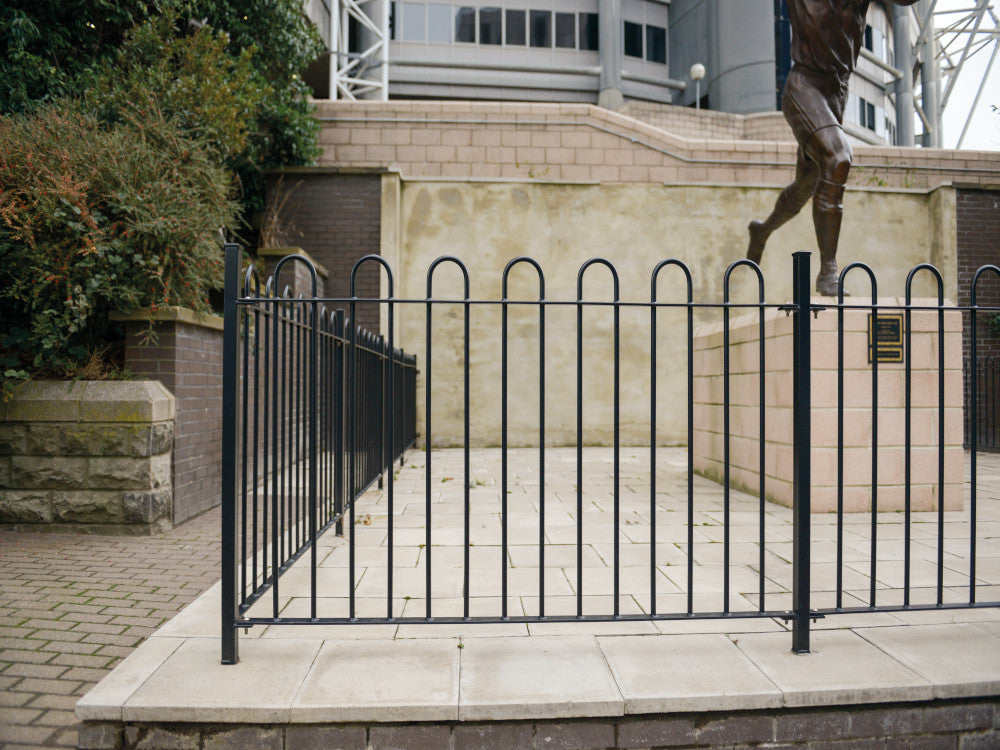Adding railings to your property improves safety and security while enhancing curb appeal, but many homeowners are unsure whether planning permission is needed. This guide explains when approval is required, the relevant height limits, and how to choose compliant products from DC Iron.
Please note this article offers general guidance, always check with your local planning authority for your specific project.
When Planning Permission Is Required
For most domestic projects, installing a new railing or replacing an existing one does not require planning permission, provided you stay within height limits and keep the design similar to what was there before.
The key exception is where the railing forms a boundary with a public highway (e.g., fronting onto a pavement or road). If the height will exceed 1 m, you must apply for planning permission. The same rule applies to walls or fences: anything over one metre adjoining the highway requires approval.
There are other circumstances where permission is needed. If your property is listed or lies within a conservation area, Article 4 Directions often restrict changes to boundary treatments.
In these cases, even replacing like for like may need consent. Always check the local authority’s guidance if your house falls into one of these categories.

Height Limits for Railings
For boundaries that do not front onto a public highway, such as side or back gardens, planning permission is only required when the railing or fence exceeds 2 m in height.
Anything below this limit is typically classed as a permitted development. To maximise privacy while staying within the rules, many homeowners opt for a combination of railings atop a low wall; the total combined height is what counts.
Different height rules apply to balcony balustrades. According to British Standard 6180, guardrails on internal stairs and landings must be at least 0.9 m high, while external balconies or roof terraces require a minimum of 1.1 m.
These heights relate to building regulations for safety rather than planning permission, but they’re worth considering if you’re installing Juliet balconies or raised decks.
Building Regulations vs. Planning Permission
Planning permission controls how a structure looks and its impact on neighbours, whereas building regulations focus on safety and structural soundness. For boundary fences and railings, building regulation approval is generally not required; however, you must ensure the wall or posts are strong enough to support the new installation.
If you’re anchoring railings into an existing wall, check that the wall is structurally sound and able to bear the load. Where there is any doubt, consult a structural engineer.
Party Walls and Shared Boundaries
If the boundary is shared with a neighbour (a ‘party wall’), you should notify them before making changes. Under the Party Wall etc. Act, replacing or building a new fence on a shared boundary may require formal consent.
It’s good practice to discuss your plans with adjoining property owners and reach agreement on height and style, especially if costs are to be shared.
Local Variations and Special Cases
Local authorities can impose additional restrictions, particularly in conservation areas or for listed buildings. Unique geography can also affect railing height; for example, if the ground slopes, the point for measuring height may vary. Balconette’s guide recommends contacting your local planning officer for bespoke advice, especially when regulations are unclear.
This is also wise if you intend to remove and replace an existing boundary: while replacement of a like‑for‑like structure usually doesn’t need permission, changes in height or material could trigger a requirement.

Choosing the Right Railings
DC Iron offers a wide range of railings and fencing systems designed to meet UK regulations and aesthetic preferences. Here are some options to consider:
Bow Top Railings
These railings have smooth, curved tops with no sharp edges, making them ideal for family gardens, schools or playgrounds. Competitor guides note that bow‑top railings provide security without creating hazards.
DC Iron’s Bow Top range combines a child‑friendly profile with robust construction and can be powder‑coated in various colours.
For countryside properties, estate railings offer a light, open appearance that blends into the landscape. They’re a cost‑effective alternative to heavy flat‑bar railings and give a traditional, country feel.
We supply estate fencing in galvanised steel with optional powder‑coat finishes.
Ornamental Railings
If you want a heritage look, DC Iron’s ornamental railings evoke the elegance of wrought iron. Competitor commentary notes that such designs offer a contemporary take on classical themes.
Choose from decorative finials, scrolls and panels to complement period properties.
All our railings are available with galvanised or powder‑coated finishes, ensuring long‑lasting protection.
Tips for a Smooth Planning Process
Take Measurements: Measure the height from ground level at the lowest point. Include any walls or plinths in your calculations.
Check Council Websites: Many UK councils provide guidance notes or online forms for boundary alterations. Reading these can save time and unexpected fees.
Seek Pre‑Application Advice: If you’re unsure whether your project needs permission, most planning departments offer pre‑application services. This can clarify requirements and highlight any potential issues early.
Maintain Neighbour Relations: Inform neighbours of your plans. Cooperation can avoid disputes and objections that might delay approval.
Use Quality Materials: Investing in high‑quality, galvanised or powder‑coated railings reduces maintenance and ensures compliance with safety standards.
Summary with DC Iron
Whether you’re replacing a front garden railing or adding a Juliet balcony, understanding when planning permission is required will help you avoid legal problems and delays. As a rule of thumb, any boundary treatment over 1 m high next to a highway or 2 m elsewhere requires approval. Balustrades must meet minimum height requirements (0.9 m internally, 1.1 m externally).
Always verify rules with your local authority, especially if your property is listed or in a conservation area.
DC Iron supplies a comprehensive range of compliant hand railings and fittings, from hoop‑top railing and estate fencing to ornate designs, all available in durable finishes. If you have questions about planning permission or product suitability, our team is ready to help.

